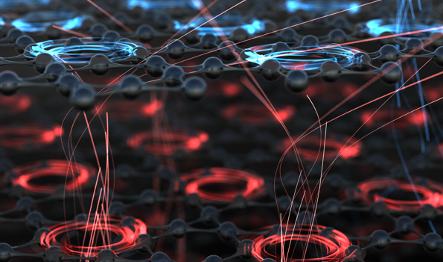Electronic chirality in an achiral Kagome superconductor
An international team including members of the group Neupert has for the first time observed the electronic magneto-chiral anisotropy (eMChA) in a structurally achiral crystal, CsV3Sb5.

Whether an object differs from its mirror image – a property referred to as ‘handed’ or ‘chiral’ – or not has important consequences for its behavior. Chirality is one of the most fundamental geometric properties and plays a special role not only in physics, but also in biology and chemistry. For materials, one distinguishes between crystals in which the periodic arrangement of the atoms is chiral or not. In a chiral crystal, electrons and electric currents flowing within it must also differ from their mirror image, a property that can lead to exotic responses and novel applications.
One example is the electronic magneto-chiral anisotropy (eMChA), a diode-like effect where the electric currents flowing from left to right are different from those flowing right to left. In their work, the researchers for the first time found chiral transport in an achiral crystal, the Kagome material CsV3Sb5. With the atomic positions in the crystal equal to their mirror image, the chirality can be entirely associated with the electronic system. This new electronic chirality can be switched using magnetic fields, an intriguing feature that may well find its application in future technology.
Publication: https://www.nature.com/articles/s41586-022-05127-9.